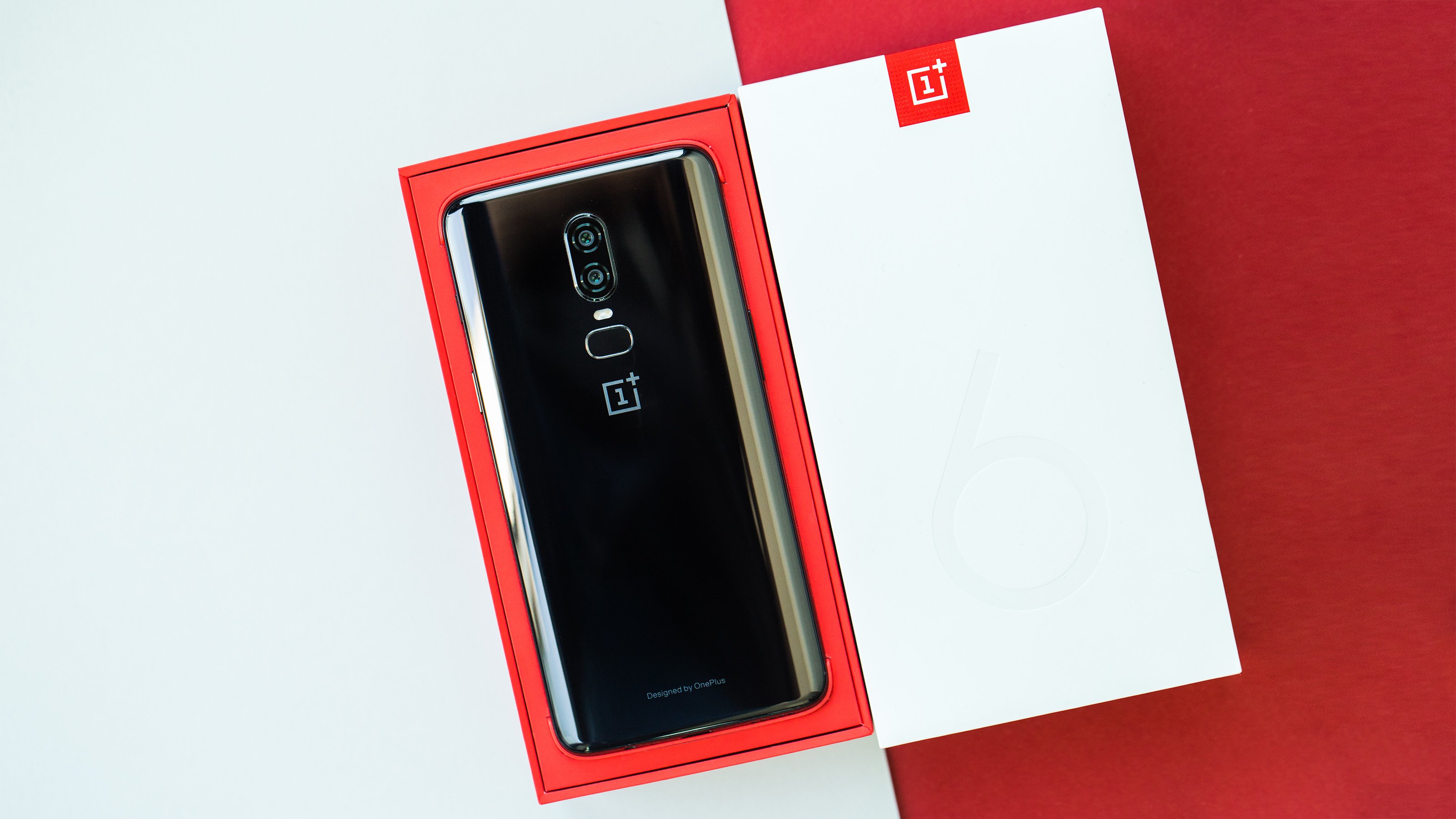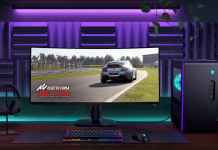[dropcap]O[/dropcap]nePlus built its empire (so to speak) on being the “flagship killer” at half the price. They offered a phone that was pretty good, at a price that was really good, and sold via limited channels in limited markets. That strategy seems to have worked so far, but has it “killed” any flagships? Not really.
However, in a way, the brand’s success has killed the interest in the brand itself. OnePlus, a fan favourite, was ever popular because it stuck it to the big names like Samsung and Apple with a quality phone that didn’t break the bank.
In 2018, though, that’s no longer enough. A phone can’t just be cheaper than a flagship and be just so-so to make it good. It actually has to be good, and not just good, but great.
From this perspective, I wasn’t all that excited to try the OnePlus 6. I’ve been using another Chinese phone – Huawei’s P20 Pro – for months, and rather like it. OnePlus 6 didn’t hold much of my interest, and so reluctantly, I set out to review.
What are the key specifications?
OnePlus have cut precisely no corners when it comes to the specification race. OnePlus 6 features the latest Qualcomm Snapdragon 845 processor, paired with a collosal 8GB of system RAM, and 128GB of storage in our review unit.
With dual-SIM capability, USB-C, fast charging, and perhaps the world’s fastest fingerprint sensor, the OnePlus 6 leaves you wanting very little. The full specifications are below:
| Key Specifications: | OnePlus 6 |
|---|---|
| Release date | May 2018 |
| Screen size | 6.28-inch |
| Screen technology | Optic AMOLED |
| Resolution | 2,280 x 1,080 |
| PPI | 402 |
| Rear camera | Dual 16MP |
| Front camera | 16MP |
| Chipset | Snapdragon 845 |
| Core config | 2.8 GHz x 4 + 1.7 GHz x 4 |
| RAM |
|
| Storage |
|
| MicroSD | No |
| Battery | 3,300 mAh |
| Battery removable | — |
| Connector | USB C |
| Headphone Port | Yes |
| Headphone Location | Bottom |
| Speaker Configuration | Mono |
| NFC | Yes |
| Android OS | Android 8.1 |
| Vendor skin | OxygenOS |
| Dimensions | 155.7 x 75.4 x 7.8 mm |
| Weight | 177g |
| Colours |
|
What’s good about it?
Credit where credit is due, the OnePlus 6 looks premium. Some of their older phones looked a bit rubbish, a bit boring. There’s none of that here. The OnePlus 6 looks every bit the premium phones it’s trying to upset. Improved materials, design, in-hand feel .. you name it.
[quote type=”right”]Glass, glossy sides, it oozes premium, quality design, and it’s 100% at home alongside Samsung’s Galaxy S9, Huawei’s P20 Pro, or even Apple’s iPhones.[/quote]
Put this phone next to any of 2018’s premium smartphones (or late 2017 in the case of Apple) and you’ll notice nary a difference; the OnePlus 6 deserves to be here. There’s always room for improvement, but OnePlus has finally matched its competitiors where it matters – no longer does it look like the daggy cousin.
Better still, OnePlus eschews hardware gimmicks and that continues with the OnePlus 6; all the buttons you’d expect are where they belong, and there’s no stupidity going on here. Regular buttons that work as regular buttons should; no fancy touch-sensitive panels, no squeezing, no new technology which might not work properly – just good tech that works. OnePlus also maintains the alert slider which is very iPhoney, but also very cool.
I also quite like what OnePlus has done with the software; OxygenOS is the fastest interpretation of Android I’ve ever used, and in many cases, it feels faster and smoother than even Android on a Pixel device. I’m told that this isn’t new on the OnePlus 6 – this has been the case with the company’s previous phones too – but for me this was a very pleasant surprise.
Why? Modern phones with all their power still have issues. Samsung’s Galaxy S9 and Huawei’s P20 Pro (the two most recent phones I’ve used) stutter and lag here and there. It’s not frequent, but it is noticeable if not annoying. Frankly, and I find this surprising to be typing, I’ve not seen the OnePlus 6 lag at any point. It’s just fast. This is what a smartphone should feel like.
On the topic of software is bloatware, and the complete lack of it. OnePlus 6’s OxygenOS is basically stock, simple Android with a few tweaks and changes, and they’re good ones. There’s no bundled crap that other OEMs are obsessed with; replacements for all of Android’s built-in functionality, health apps, all that garbage… there’s none of it. Like others have observed, a smartphone should be my window to view my data in my apps, not to force me to use someone else’s apps to do things I don’t really need to do.
Another benefit? Fairly regular, quick updates. OxygenOS keeps track of security updates almost as quickly as Google releases them. Neat.
[quote type=”left”]With OnePlus 6, I could forget about battery anxiety. It just kept on going.[/quote]
Battery life was suitably impressive during my testing, and while it might not have the largest battery of phones on the market, it just lasted all day effortlessly, and I never felt myself really looking at the battery during the day. Huawei’s P20 Pro does this too – so it isn’t so surprising as it once was – but there are many, many phones that simply don’t last all day. Battery anxiety is real, but with OnePlus 6, you can forget it.
I wish more phones worked like this.
How’s the camera?
It’s good, perhaps even very good, but is it as good as Huawei’s P20 Pro, Samsung’s Galaxy S9+ or Google’s Pixel 2 line? I’m going to go with no, not quite.
As an all around camera, the OnePlus 6 does a fairly great job. It takes nice, bright photos with vivid colour. The camera interface itself is clean and simple, though it makes more high-end features available for those who want to capture something a little special (e.g. slow shutter photos, timelapses etc).
Where I feel it’s let down is where most cameras falter, and that’s in low light. Perhaps we’re somewhat spoiled for choice now with all the top brands releasing smartphones with cameras that almost work better in the dark than the day. Whatever the case may be, the OnePlus 6 simply doesn’t excel at night; it does okay, but it’s not blowing up my skirt.
That middle photo was a long exposure aimed at a nearby sports ground. Even with 20 seconds exposure, the OnePlus 6 couldn’t make anything useful of it. Here’s the exact same shot from Huawei’s P20 Pro:

Camera quality is one of the main deciding factors for me in choosing a smartphone, and I’m not afraid to pay extra to make sure that the camera performs at 100% across the scenes I want to use it with. OnePlus 6 hits about 90%; its daytime photos are effortlessly good, and while Huawei can outclass it, it takes a bit of effort. Google’s Pixel 2 range, though, just wipes the floor with OnePlus here.
When it comes to night shots.. well.. the less said, the better. I just don’t think the OnePlus 6 keeps up at all. If most of your photography needs arise during the day, you won’t be disappointed. If you’re a night owl.. well.. you might be.
What’s not to like?
Probably the thing that will annoy most is that, despite having been around for some years now, OnePlus still doesn’t sell to the Australian market. They’ve ummed, ahhed, and made noises about doing so, but for now? They don’t.
There’s also the price. OnePlus was, in the past, a cheaper proposition but today the OnePlus 6 starts at $529 USD, and to get it into Australia, you’re realistically looking at $700 at the very least, and closer to $850 if you want to buy from the likes of Kogan.
There is also one other area where not being sold in Australia might hurt. If you’re in a strong 4G area and your 3G reception is a bit hit and miss, OnePlus 6 doesn’t seem to work on VoLTE in Australia; 4G data works just fine, but on Vodafone and Optus (which I tried) there’s no VoLTE. This means your calls drop back to 3G and may not perform as well as you’d like.
Despite the increase in price over past year models, it’s worth noting that undercutting the competition isn’t free; good componentry and features cost money, and to keep the price low, there’s some areas where reviewers generally agree the OnePlus 6 doesn’t keep up.
[quote type=”right”]OnePlus have cut some costs in audio, IP rating and (apparently) their display. But it doesn’t ruin the overall package.[/quote]
For starters, whereas most premium smartphones are “water proof” (or, in technical language, rated at least IP67), OnePlus 6 is not. Granted, like most modern phones, it’ll probably handle a bit of rain just fine, but without that certification, you necessarily have to be a little bit more careful. It might not matter to everyone, but it’s something I’ve come to expect in a smartphone, and many users do too.
The built-in audio is fairly vanilla, too. No stereo speakers, no booming sound. It’s just a single speaker firing down and it’s unremarkable. It gets reasonably loud, but like any single speaker setup, there’s not much it can really do. If you want fancier sound, you’ll have to use headphones (thoroughly recommended) or look somewhere else.
I’ve read elsewhere of complaints about the OnePlus 6 display, and I’m not convinced. I’ve got a 4K video that I like to watch on every phone I test (because it’s a benchmark, I guess) and I’ve come to identify what a good screen does well, and also what bad screens can’t handle.
Others will criticise OnePlus 6’s display for being unable to get dark enough at night, or for not handling super-bright daylight conditions … but that doesn’t concern me greatly; that could be said of many phones, modern and expensive included.
However, watching OnePlus 6 tackle that video with vivid colours, lots of movement, crystal clear precision and more, I’m not going to offer any complaints. The OnePlus 6 display is okay with me.
Should I buy one?
At a good $200-$300 below the cost of an entry-level “premium” smartphone, the OnePlus 6 is a formidable proposition. It has everything inside that the big guys do, including a great camera, all-day battery life, and the fastest interpretation of Android you’re ever likely to see.
In fact, there’s really nothing to dislike. If you’re looking around the $800 mark for the best phone you can buy, then the OnePlus 6 has got to be near the top of your list. In this, the OnePlus 6 is nothing new; it has long been spruiked as the best phone for the price, and that hasn’t changed this year.
[quote type=”left”]It used to be that spending less on a smartphone meant you simply got less. With OnePlus 6, you spend less, and easily get premium value.[/quote]
What has changed, though, is the included value. Not content with just being good enough for the money, OnePlus 6 has made the leap to being the best for the money. Featuring an improved design, a camera that lives up to expectations and that extra luxurious feel, the OnePlus 6 can stand toe-to-toe with the Samsungs, Apples and Huaweis, and be an equal choice.
Where it steps ahead, at least in Android land, is that it matches the competition on hardware and raw power, and then matches that with virtually stock Android with a bit of spit and polish. I find myself wishing that Huawei or Samsung would pair their amazing hardware with minimalist software like this. We’d all be better off if they did.
If money is no object, then you’d probably still be looking at one of those big names for a more complete premium experience; spending a little extra generally gets you a best-in-class camera, IP67 or IP68 rating, stereo speakers and some other wizz-bang stuff.
Of course, if the $800 mark is too high, then there’s probably better value to be found in cheaper phones, and that sort of sub-$600 market is really, really hot right now with excellent phone options from Nokia, Alcatel, Motorola, and Huawei.
The one major, major downside to OnePlus 6 is the difficulty of getting one in Australia; they’re all imports, and you may have a bit of an adventure if you need a warranty service or replacement.
Besides that, the OnePlus 6 is clearly the winner in that sub-premium price range. There’s simply nothing else to add.



















